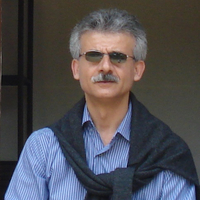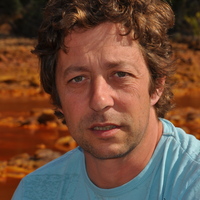Unpublished Reports by Roger H H Werner
National Register Evaluations of Six Prehistoric Sites, and the geoarchaeological Investigations ... more National Register Evaluations of Six Prehistoric Sites, and the geoarchaeological Investigations of Four Paleosols and One BUried Archaeological Deposit along 2.5 Miles of Roadway south of Lakeport.

The report herein presents the results of a Section 106 compliance review for an existing cultura... more The report herein presents the results of a Section 106 compliance review for an existing cultural resources investigation by Archaeological Research and Archaeological Services, Inc. (ASI) efforts to upgrade a report completed for City of Lakeport’s California Environmental Quality Act environmental review program to a report suitable for compliance with Section 106 of the National Historic Preservation Act. Qualifications of ASI personnel ate provided in Appendix H. ASI’s report is not meant as a critical review of the technical aspects of the existing report prepared by Archaeological Research, who generously shared all of its project files with ASI and fully cooperated with this investigation. However, it has been both necessary and appropriate to identify areas where CEQA compliance significantly varies from compliance with federal laws and regulation. It must be emphasized that Archaeological Research complied fully with the City of Lakeport’s CEQA compliance process, provided documentation appropriate for the City to comply with relevant state laws and regulations, and completed the work in a timely fashion in a way that did not delay the project. Given the local predilections and vagaries of local CEQA enforcement, we are uncertain if it would have been feasible for Archaeological Research to propose a more extensive program then was undertaken. Nevertheless, this report identified deficiencies with respect to federal compliance. Between May 2012 and April 2013 ASI:
• Judged the National Register eligibility of the historical structure that once stood on the APE
• Reviewed the City-implemented CEQA cultural resource program to identify where it falls short of full Section 106 compliance. Concomitantly, we identified where the Archaeological Research report (Parker 2011a) does not comply with federal reporting standards
• Judged the National Register eligibility of the identified archaeological site (both historical and prehistoric components)
• Consulted with pertinent Native American communities and the local historical society
• Generated stratigraphic profiles for the project area based on geotechnical studies prepared by project engineers Rau and Associates, Ukiah, California
• Prepared California Department of Parks and Recreation primary, structure, archaeological site, and other forms as appropriate, and filed these with the Northwest Information Center of the California Historical Resources Information System
• Prepared a final report that complies with the California Office of Historic Preservation’s (OHP) recommended content for Archaeological Resource Management Reports (OHP 1990) and a historic structure report that complies with OHP (2003) content guidelines
• Evaluated the National Register eligibility of a demolished structure and an archaeological site with prehistoric and historic components
• Assessed the effects of the as built project on the identified cultural resources
National Register Evaluation of a part of Archaeological Site CA-LAK-510 with Focus Placed on the... more National Register Evaluation of a part of Archaeological Site CA-LAK-510 with Focus Placed on the Archaeological Potential of Soils within the Area of Potential Effect. APE soils were compared with those identified by Waters, Michael R. (2002) Geoarchaeological Investigation of the Anderson Flat Area; White, Greg and Jack Meyer (2002) Synthesis, Cultural Diversity and Culture Change in Prehistoric Clear Lake Basin: Final Report of the Anderson Flat Project; and Werner, Roger H., Mick Hayes, Adrian and Mary Praetzellis, and Scott Patterson (1988) The Cache Creek Project: Archaeological, Ethnographic, and Ethnohistoric Investigations in the Southeastern Clear Lake Basin with Emphasis on the Period A.D. 1800 to 1900.
Unpublished, 2012
Landscape analysis and Geocoring study of Holocene/Late Pleistocene Soils on the Northeastern sho... more Landscape analysis and Geocoring study of Holocene/Late Pleistocene Soils on the Northeastern shoreline of Clear Lake with National Register Evaluations of Associated Prehistoric Sites.

CA-SON-1019 is an extensive prehistoric site located in southeastern Santa Rosa, in the Southern ... more CA-SON-1019 is an extensive prehistoric site located in southeastern Santa Rosa, in the Southern Districts of the North Coast Ranges Archaeological Region. The prehistoric site, averaging six in. deep in most areas, covers several acres including a low hilltop, an adjacent swale, and a long open slope with a northerly exposure. The site covers the western third of, and extends south off the Gordon Ranch Project Area for an unknown distance. The modern environment of the archaeological site is open grassland with widely spaced blue oaks and some California riparian species the nearby active stream corridors. The environment during the prehistoric era was probably similar with more oaks scattered about in a park-like environment. The dominant cultural material at CA-SON-1019 is obsidian derived from both the nearby Annadel and more distant Napa Valley Glass Mountain quarries. Far lesser quantities of exotic obsidians, locally available siliceous materials, and basalt also occur; organic materials are apparently completely absent. Much of the archaeological site's spatial extent is the result of natural soil creep and erosion and owing to a combination of both natural and human-induced effects, the deposit is well mixed.











Uploads
Unpublished Reports by Roger H H Werner
• Judged the National Register eligibility of the historical structure that once stood on the APE
• Reviewed the City-implemented CEQA cultural resource program to identify where it falls short of full Section 106 compliance. Concomitantly, we identified where the Archaeological Research report (Parker 2011a) does not comply with federal reporting standards
• Judged the National Register eligibility of the identified archaeological site (both historical and prehistoric components)
• Consulted with pertinent Native American communities and the local historical society
• Generated stratigraphic profiles for the project area based on geotechnical studies prepared by project engineers Rau and Associates, Ukiah, California
• Prepared California Department of Parks and Recreation primary, structure, archaeological site, and other forms as appropriate, and filed these with the Northwest Information Center of the California Historical Resources Information System
• Prepared a final report that complies with the California Office of Historic Preservation’s (OHP) recommended content for Archaeological Resource Management Reports (OHP 1990) and a historic structure report that complies with OHP (2003) content guidelines
• Evaluated the National Register eligibility of a demolished structure and an archaeological site with prehistoric and historic components
• Assessed the effects of the as built project on the identified cultural resources
• Judged the National Register eligibility of the historical structure that once stood on the APE
• Reviewed the City-implemented CEQA cultural resource program to identify where it falls short of full Section 106 compliance. Concomitantly, we identified where the Archaeological Research report (Parker 2011a) does not comply with federal reporting standards
• Judged the National Register eligibility of the identified archaeological site (both historical and prehistoric components)
• Consulted with pertinent Native American communities and the local historical society
• Generated stratigraphic profiles for the project area based on geotechnical studies prepared by project engineers Rau and Associates, Ukiah, California
• Prepared California Department of Parks and Recreation primary, structure, archaeological site, and other forms as appropriate, and filed these with the Northwest Information Center of the California Historical Resources Information System
• Prepared a final report that complies with the California Office of Historic Preservation’s (OHP) recommended content for Archaeological Resource Management Reports (OHP 1990) and a historic structure report that complies with OHP (2003) content guidelines
• Evaluated the National Register eligibility of a demolished structure and an archaeological site with prehistoric and historic components
• Assessed the effects of the as built project on the identified cultural resources